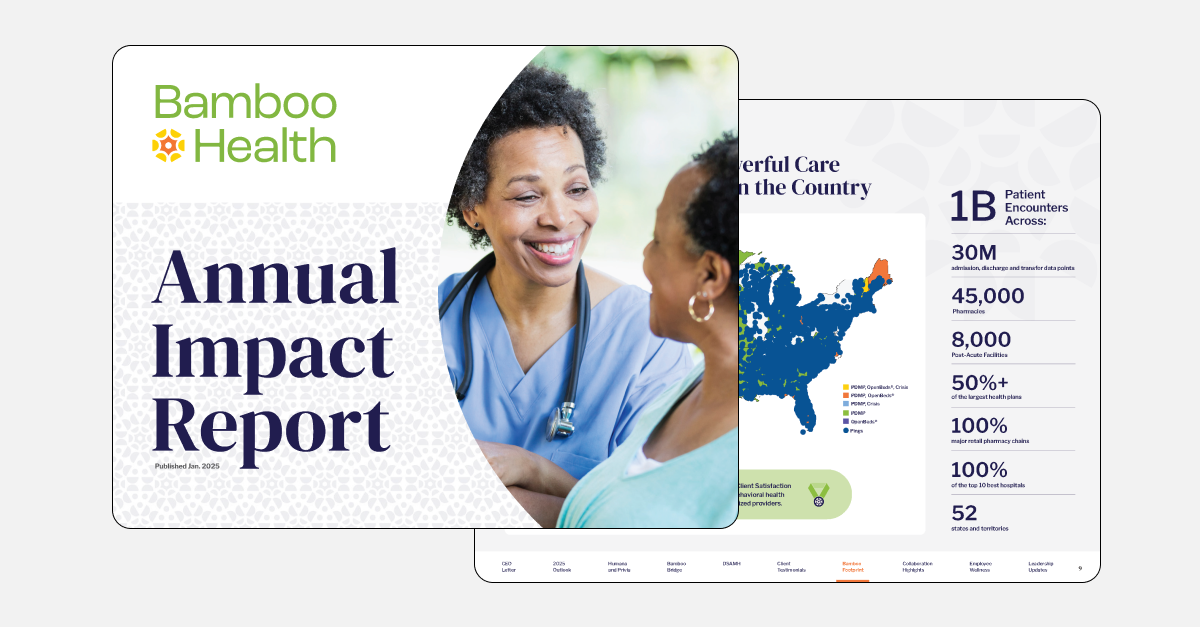Prescription drug monitoring programs (PDMPs) are one of the most powerful tools in addressing the opioid epidemic, yet many are still not utilized to their full potential. Gone are the days of relying only on traditional PDMPs that were isolated from the broader healthcare system – today’s advances in integration and interoperability have propelled PDMPs beyond their original scope, enabling healthcare providers to access real-time data that informs clinical decisions and improves public health outcomes.
Here are three ways PDMPs can work better for your organization:
- Optimize integration to turn data into actionable insights: Integration is critical to optimize access to timely insights without disrupting care. Organizations can turn data points into actionable insights by embedding PDMP data directly into electronic health records (EHRs) and other healthcare data systems. Seamless integration eliminates the need for manual lookups, reducing workflow disruptions and allowing providers to make informed decisions at the point of care. With insights on prescription histories and potential red flags such as high dosages or dangerous drug combinations readily available, clinicians can proactively address risks and tailor treatment plans to individual patient needs.
- Connect physical and behavioral health context to controlled substance monitoring: While PDMPs have traditionally focused on tracking controlled substance prescriptions, organizations must look beyond conventional data sources and incorporate additional insights that provide a more comprehensive view of a patient’s health. By surfacing broader physical and behavioral health insights within clinical workflows, healthcare organizations can enhance care coordination and implement more effective intervention strategies. Organizations can then maximize effectiveness by choosing a partner with an engaged network of interconnected data sources to surface additional data beyond what is traditionally collected, including: admission, discharge and transfer (ADT) data, behavioral health crisis referrals into PDMPs, nonfatal overdose monitoring and actionable insights on history of medication for opioid use disorder.
- Gain deeper controlled substance insight: PDMPs are now evolving to also help identify patients who have stopped taking buprenorphine or other medication-assisted therapy drugs, which could represent an increased risk of relapse or overdose. With this deeper level of proactive insight, providers can take prompt action and support intervention efforts.
The landscape of PDMPs continues to evolve, and integration remains a key driver in unlocking their full potential. By embracing advanced interoperability, expanding data sources and leveraging real-time insights, healthcare organizations can transform PDMPs from regulatory tools into life-saving resources.
To learn more, download our whitepaper or contact us.






